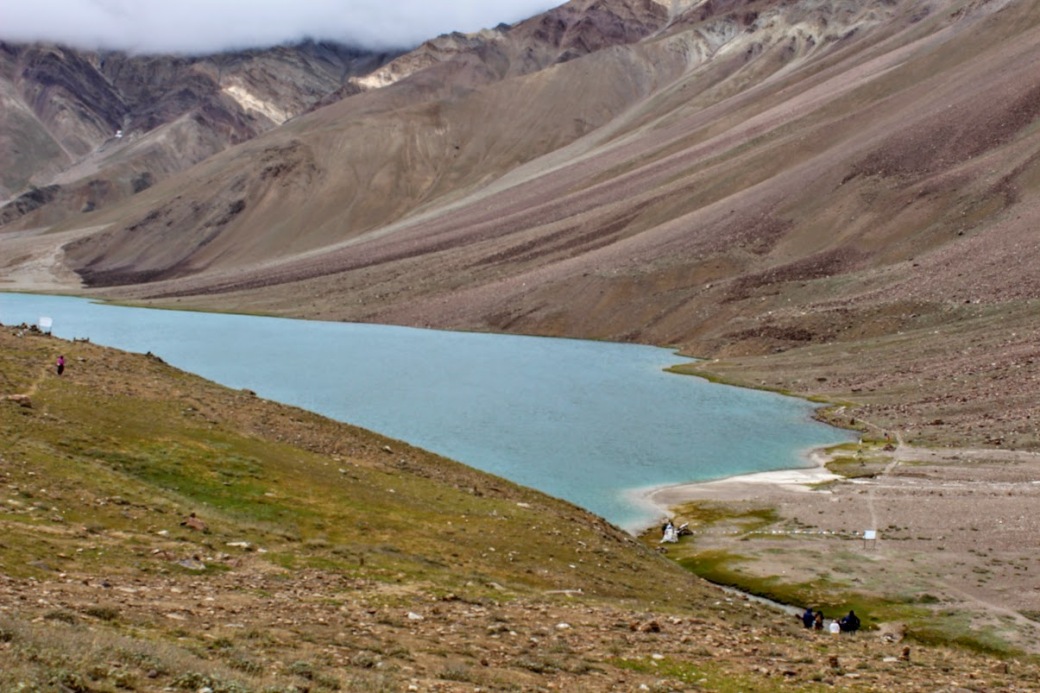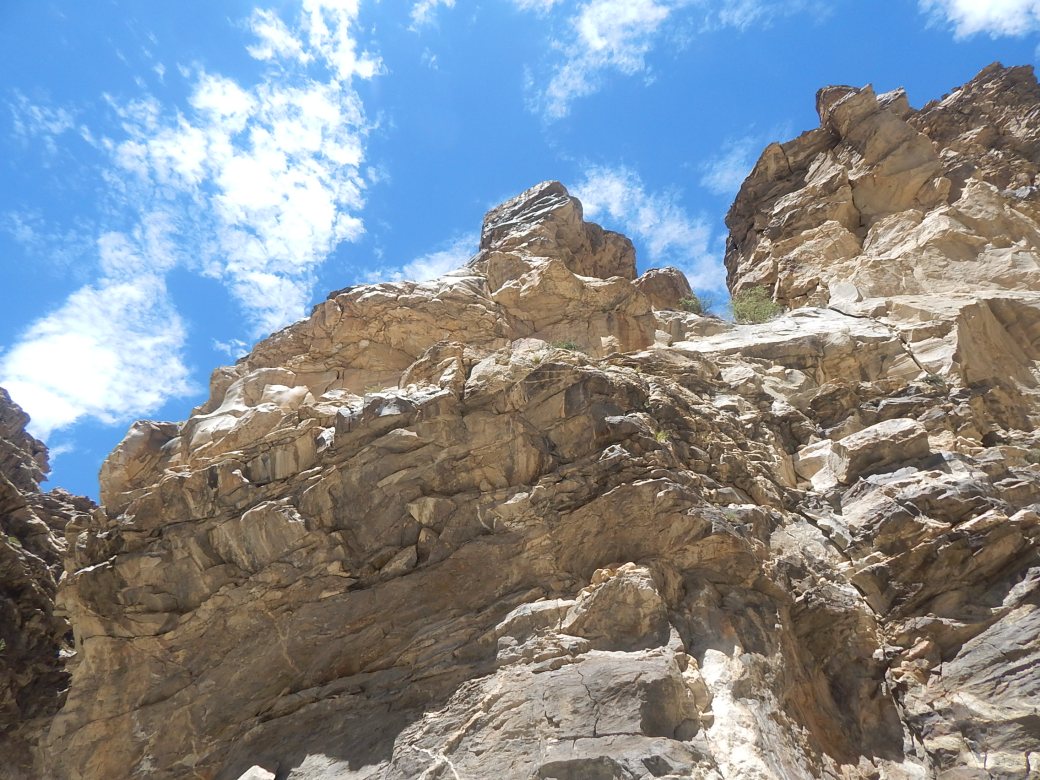After two days in the idyllic villages, we are back on the road. Today we are going to cross Kunzum La and this was going to be the most challenging route of the entire trip.
Kunzum Pass is the high mountain pass which connects Lahaul with Spiti valley. It remains inaccessible for eight months due to heavy snow and opens only from mid- June to September. A favorite with the adventure seekers, reaching the pass is considered a high point in every sense.
Starting off early to avoid the rush hour, all of us were in fine form. The group had bonded well over the trip. Some were already making plans to come back here for the winter.
From Kaza, it is 75 km to Kunzum Pass. Spiti valley continued to charm us with its mesmerizing landscapes. At many places, there are no tarmacked roads. The drivers depend on one another to keep tabs on the latest road conditions. We had to brave our way through deep gorges, massive boulders, and raging streams. It was exciting as well as scary to wade through ice cold waters.
There was a dramatic change in the landscape near the Kunzum pass. Vast green pastures took over from the rugged barren mountains.

Near Kunzum Pass
A flock of sheep was grazing under the watchful eyes of the shepherd.


A detour from the main road leads to the famed Kunzum Pass.

Kunzum Pass
At the top, there is a small temple for the local deity Kunzum Mata. It is customary for travelers to stop here to pay obeisance to the Kunzum Mata. Beside the temple are stupas and hundreds of prayer flags making it look more like a Buddhist monastery. I did not want to take my shoes off to enter the temple. So I went on to do a parikrama (clockwise circumambulation) of the temple and bowed to the spectacular vistas.

Kunzum Mata Temple

The temple, gompas, prayer flags and the mountains invoke a sense of calm
The majestic Chandrabhaga mountain range overlooks the pass. There is something special and divine about the mountain passes that makes us want to linger. But our vigilant drivers are ready to move.


Leaving Kunzum Pass
The road progressively deteriorated and now it was just a winding gravel path.
Further ahead was the camping site. After that bumpy ride, it was a relief to see the cozy tents and the picturesque surroundings. Chandratal is about 2 km from the camp and we got ready for the next adventure. Visiting Chandratal has been one of my fondest dreams and I couldn’t believe that I was finally going to be there.
Chandratal is about 2 km from the camp and we got ready for the next adventure. Visiting Chandratal has been one of my fondest dreams and I couldn’t believe that I was finally going to be there.
The vehicles left us in the parking area and we started the hike. As expected it was very cold and windy. But nothing could dampen our excitement. The fairly easy trek takes you through rolling hills, meadows and couple of streams.

Still a long way to go

Snow clad mountains and meadows
Though Chandratal has been a popular tourist destination we were fortunate to have the place to ourselves. I was getting slightly impatient as there was still no sight of the lake.
And then the first glimpse of the magical lake …..
The sliver of blue was electrifying. I quickened my pace and completed the last part of the hike in a daze.



The magical Chandratal

The water shows the most amazing colors which keep changing. The mountain ranges have a beautiful shade of pink which I have never seen elsewhere. The lake and the mountains captivate you and no pictures can capture its beauty.
Chandratal literally means Moon Lake. The name comes from its crescent shape. The high altitude (4300 meters) lake is a protected wetland and remains frozen in winter. The local people consider it sacred. The ravishing lake has its share of folktales and lore which add to its allure. I am not surprised! Beautiful maidens, fairies, and star- crossed lovers are always attracted to lakes.
I walked around the lake and took in more of the stunning views around. The water was freezing cold yet energizing. The silence and serenity calm the mind. I wouldn’t want to be anywhere else on earth.

Cairns on the banks

Different hues

The shape of water
There is a trail along the lake and you can do a parikrama. Though we wanted to, decreasing light and howling cold winds discouraged us. As I was walking back I couldn’t help but wonder how long this place will retain its sanctity. I pray …….
Unfortunately, the best of times have to come to an end. Today is our last day in Spiti and tomorrow we are going back to Chandigarh. It has been an incredible journey. Apart from the stunning visual diversity what made it special was my fellow travelers and the people of Spiti. I am lucky to have had such wonderful folks to share the adventures. It is hard to say goodbye, even harder to leave this remote haven.
Enchanting Spiti- God’s own!




































